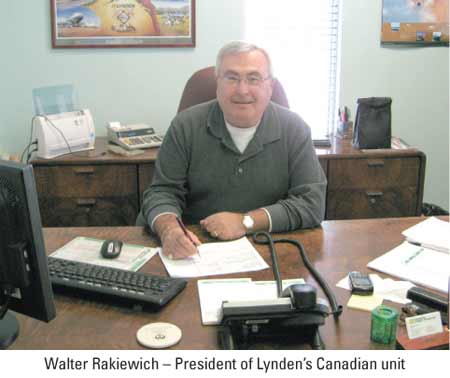- By Peter A. Buxbaum,
AJOTIn 2000, the US Environmental Protection Agency issued rules designed to reduce sulfur emissions from diesel fuel by 95%. The regulations were to become effective in different parts of the country between 2006 and 2010.
As a result, diesel refiners scrambled to upgrade their facilities in order to come into compliance. Tesoro Corporation, a refiner and marketer of fuels based in San Antonio, Texas, needed to modernize its refining facility in Kenai, Alaska, an effort which would require shipping many large, heavy, and oversized components. That project took place in 2006 and 2007.

To accomplish the task, it turned to one of its existing logistics providers, Lynden Incorporated, a carrier with headquarters in Anchorage, Alaska and Seattle, WA. Lynden is a group of 18 companies that provide a range of transportation and logistics services in Alaska and western Canada and the United States. Planning for the Tesoro shipments took a year and a half.
Most of the large pieces were moved from Houston, Texas, and Bellingham, WA, to Anchorage and Kenai. A variety of specialized equipment was mobilized to perform the task.
“Two of the largest pieces were the reactor and tower,” said Sherri Brown, Lynden’s regional manager in Houston. “They both moved out of Houston by rail to Anchorage where they were transferred to truck and transported to Kenai.”
The reactor and tower components required loading on specialized rail cars. The tower was 127 feet long, 10 feet 6 inches wide, 14 feet high, and weighed 132,000 lbs. The reactor was 76 feet long, nearly 10 feet wide, over 12 feet high and weighed 122,000 lbs. The largest module was 44 feet long 23 feet wide, 28 feet high, and weighed 334,000 lbs.
Transporting the equipment required multiple clearances from Houston to Anchorage. At Anchorage, the components were loaded on special multi-axle hydraulic heavy-load trailers with Jeeps and dollies that also have hydraulic controls for additional control when maneuvering around corners. Extensive permitting work, which took two and half weeks, had to be done with the Alaska Department of Transportation.
“They were extremely worried about one bridge in particular,” said Brown. “We had to move across the bridge at no more than two miles per hour and they walked across the bridge with the load.”
Portions of the single road between Anchorage and Kenai had to be shut down as the oversized components traveled over them. The largest of the Tesoro shipments was the biggest ever permitted by the Alaska Department of Transportation between Anchorage and Kenai.
“The Alaska Department of Transportation is very good to work with as long as you start working with them early and give them the heads up,” said Brown.
Pipe modules for the Tesoro refinery were manufactured in Bellingham, WA, and shipped to Anchorage on a Lynden charter barge. From Anchorage, the pipe modules were trucked to Kenai.
The pipe module manufacturer actually leased space at the Bellingham port so that the equipment could be loaded on the barge directly from the manufacturing facility without having to be transported over the road. “There would have been huge issues if they had to truck the pipe modules from their regular manufacturing facility because they couldn’t clear a number of bridges,” said Brown. “That’s why the manufacturing was done at the port itself.” Special trailers called Gold Hoffers were used to move the pipe modules to the barge.

Lynden has been active over 30 years in moving oil rigging equipment to Alaska. Much of this equipment is manufactured in the Canadian province of Alberta, so it has fallen to Walter Rakiewich, president of Lynden’s Canadian unit, located in Edmonton, Alberta, to help move them.
“The biggest consideration is what ty



